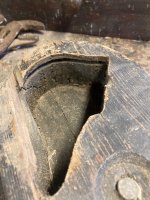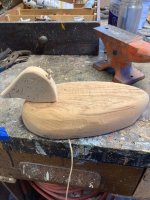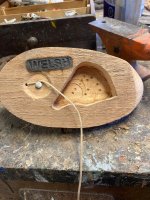Richard Lathrop
Well-known member
Eric,Vince
From a woodworker's point of view the bottom pocket is the most challenging aspect of these decoys. Not only is there a pocket but the anchor slips into and wedges in a channel in that pocket. In 1920 the machine to make those cuts was a pin router. Pin routers were widely abandoned starting twenty years ago and can be picked up at machinery auctions for scrap prices. I've never wanted one on my shop, until now
The bottom looks like it is ideal for either routing on a CNC or having a CNC made template that you could attach to a body and rout out the pocket with a router and bushing.
Rick Lathrop





